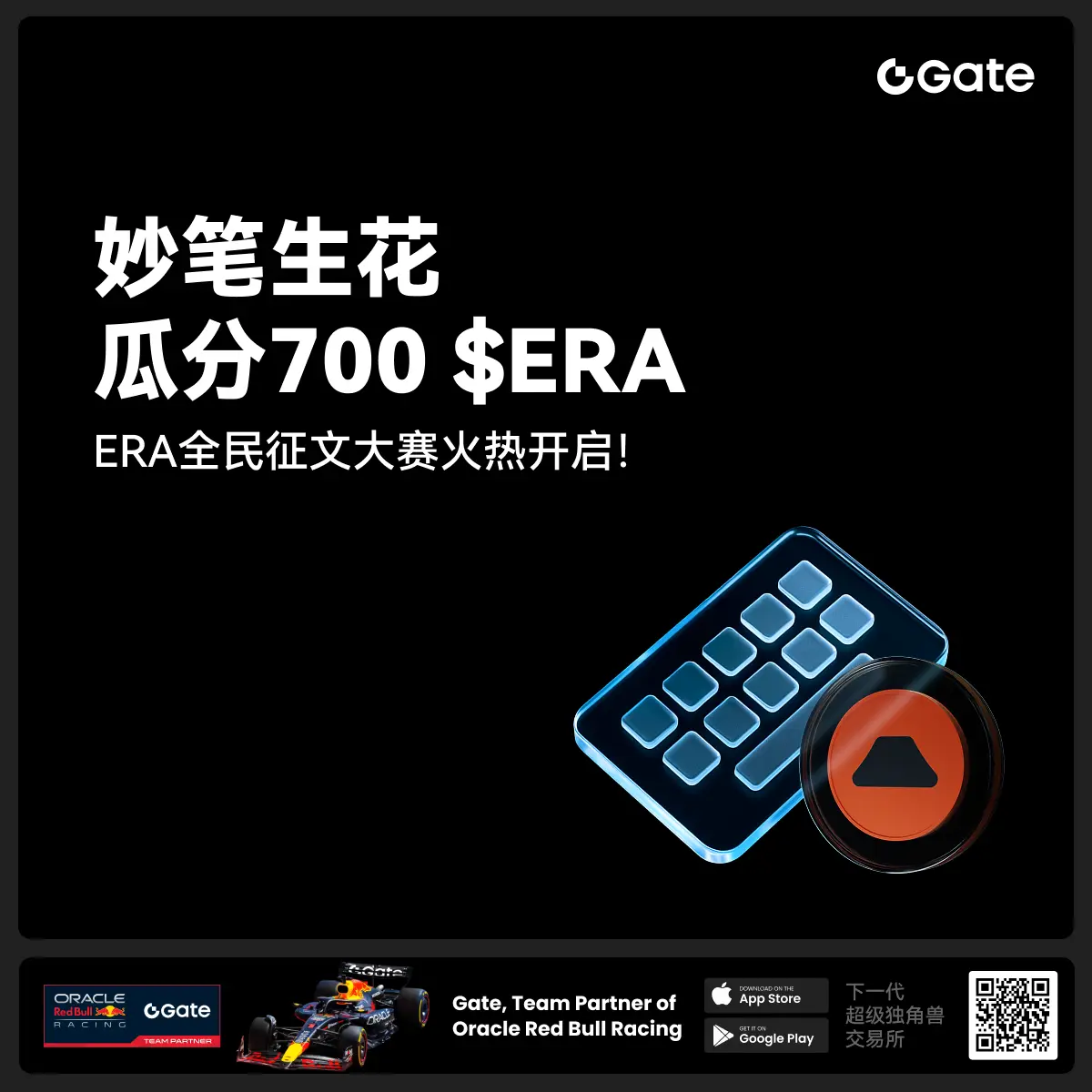- 话题1/3
5k 热度
15k 热度
9k 热度
54k 热度
20k 热度
- 置顶
- 📢 Gate广场 #MBG任务挑战# 发帖赢大奖活动火热开启!
想要瓜分1,000枚MBG?现在就来参与,展示你的洞察与实操,成为MBG推广达人!
💰️ 本期将评选出20位优质发帖用户,每人可轻松获得50枚MBG!
如何参与:
1️⃣ 调研MBG项目
对MBG的基本面、社区治理、发展目标、代币经济模型等方面进行研究,分享你对项目的深度研究。
2️⃣ 参与并分享真实体验
参与MBG相关活动(包括CandyDrop、Launchpool或现货交易),并晒出你的参与截图、收益图或实用教程。可以是收益展示、简明易懂的新手攻略、小窍门,也可以是现货行情点位分析,内容详实优先。
3️⃣ 鼓励带新互动
如果你的帖子吸引到他人参与活动,或者有好友评论“已参与/已交易”,将大幅提升你的获奖概率!
MBG热门活动(帖文需附下列活动链接):
Gate第287期Launchpool:MBG — 质押ETH、MBG即可免费瓜分112,500 MBG,每小时领取奖励!参与攻略见公告:https://www.gate.com/announcements/article/46230
Gate CandyDrop第55期:CandyDrop x MBG — 通过首次交易、交易MBG、邀请好友注册交易即可分187,500 MBG!参与攻略见公告:https://www.gate.com/announcements
- 🎉 Gate广场“星火计划”入驻KOL突破1000人!
💥 创作者生态迎来全面爆发期!
📈 上首页、拿奖励、赢影响力,你还在等什么?
💰 现金激励 ✔️
🚀 流量扶持 ✔️
👑 专属认证 ✔️
从0到1000,我们只用了短短数周,Gate广场正在成为Web3内容风暴眼⚡
你发布的不只是内容,而是下一个“爆款机会”!
🌟 加入星火计划,开启你的爆发之路!
👉 https://www.gate.com/announcements/article/45695
#GateSquare # #星火计划# #内容创作者新纪元 # #KOL集结令#
- 📢 #Gate广场征文活动第三期# 正式启动!
🎮 本期聚焦:Yooldo Games (ESPORTS)
✍️ 分享独特见解 + 参与互动推广,若同步参与 Gate 第 286 期 Launchpool、CandyDrop 或 Alpha 活动,即可获得任意奖励资格!
💡 内容创作 + 空投参与 = 双重加分,大奖候选人就是你!
💰总奖池:4,464 枚 $ESPORTS
🏆 一等奖(1名):964 枚
🥈 二等奖(5名):每人 400 枚
🥉 三等奖(10名):每人 150 枚
🚀 参与方式:
在 Gate广场发布不少于 300 字的原创文章
添加标签: #Gate广场征文活动第三期#
每篇文章需 ≥3 个互动(点赞 / 评论 / 转发)
发布参与 Launchpool / CandyDrop / Alpha 任一活动的截图,作为获奖资格凭证
同步转发至 X(推特)可增加获奖概率,标签:#GateSquare 👉 https://www.gate.com/questionnaire/6907
🎯 双倍奖励机会:参与第 286 期 Launchpool!
质押 BTC 或 ESPORTS,瓜分 803,571 枚 $ESPORTS,每小时发放
时间:7 月 21 日 20:00 – 7 月 25 日 20:00(UTC+8)
🧠 写作方向建议:
Yooldo
- 🎉Gate 2025 上半年社区盛典:内容达人评选投票火热进行中 🎉
🏆 谁将成为前十位 #Gate广场# 内容达人?
投票现已开启,选出你的心头好
🎁赢取 iPhone 16 Pro Max、限量周边等好礼!
📅投票截止:8 月 15 日 10:00(UTC+8)
立即投票: https://www.gate.com/activities/community-vote
活动详情: https://www.gate.com/announcements/article/45974
- 📢 #Gate广场征文活动第二期# 正式启动!
分享你对 $ERA 项目的独特观点,推广ERA上线活动, 700 $ERA 等你来赢!
💰 奖励:
一等奖(1名): 100枚 $ERA
二等奖(5名): 每人 60 枚 $ERA
三等奖(10名): 每人 30 枚 $ERA
👉 参与方式:
1.在 Gate广场发布你对 ERA 项目的独到见解贴文
2.在贴文中添加标签: #Gate广场征文活动第二期# ,贴文字数不低于300字
3.将你的文章或观点同步到X,加上标签:Gate Square 和 ERA
4.征文内容涵盖但不限于以下创作方向:
ERA 项目亮点:作为区块链基础设施公司,ERA 拥有哪些核心优势?
ERA 代币经济模型:如何保障代币的长期价值及生态可持续发展?
参与并推广 Gate x Caldera (ERA) 生态周活动。点击查看活动详情:https://www.gate.com/announcements/article/46169。
欢迎围绕上述主题,或从其他独特视角提出您的见解与建议。
⚠️ 活动要求:
原创内容,至少 300 字, 重复或抄袭内容将被淘汰。
不得使用 #Gate广场征文活动第二期# 和 #ERA# 以外的任何标签。
每篇文章必须获得 至少3个互动,否则无法获得奖励
鼓励图文并茂、深度分析,观点独到。
⏰ 活动时间:2025年7月20日 17
套利交易再起,美元、欧元成融资货币,韩元、台币将走升?
交易员预期美国总统川普的激进关税可能不会全面实施,货币波动性减弱,新兴市场套利交易再次兴起。分析师看好智利披索 (CLP)、巴西雷亚尔 (BRL)、墨西哥比索 (MXN)、南非币 (ZAR)、土耳其里拉 (TRY) 和韩元 (KRW) 。首选的融资货币为欧元和美元。
套利交易 (Carry Trade) 再起
彭博社编制的套利收益指数 (交易员借入一种低收益货币,然后投资另一种提供更高收益的货币) 在五月下旬创下七年来的新高。根据芝加哥商品交易所集团 (CME Group Inc.) 的数据,近几周资产管理公司增加了对发展中国家货币的多头部位,其中墨西哥比索的多单达到了九个月的最高水平准。
套利交易 (Carry Trade) 在低波动时期表现最佳,自 2020 年左右以来一直非常受欢迎,大多数交易都以超低收益的日圆融资。去年八月,日本央行升息导致日圆飙升,曾引发日圆套利平仓、股市大跌的连锁反应。
近几周,随着全球贸易紧张局势的缓解,套利交易情绪再度提升。摩根大通公司编制的全球货币波动率指标从 4 月初的 11% 降至周五的 8.7%。
韩元、台币升值,美元、欧元成融资货币
彭博社统整了多家分析师的看法,他们除了看好智利披索 (CLP)、巴西雷亚尔 (BRL)、墨西哥比索 (MXN)、南非币 (ZAR) 、土耳其里拉 (TRY) 和韩元 (KRW) 之外。其首选的融资货币为欧元和美元。虽然借入美元进行套利交易的缺点是美国利率相对较高,但美元进一步走弱的前景意味着拉丁美洲的一些高收益货币可能表现良好。
此外,对于其他亚洲货币的走势,分析师也做出了以下建议:
韩元 (KRW):可能在 6 月 3 日韩国选出新总统后升值
港币 (HKD):香港利率下降,导致交易商将港元用作融资工具,5 月底港元跌至交易区间的弱势端
人民币 (CNY):中国进一步放松货币政策的前景意味着人民币也「正在成为一种非常有吸引力的融资货币」
新台币 (TWD):5 月初,台币升值导致投资者之前以台币作为融资货币的部位被大幅清仓,台币汇率随之飙升。台币在上周再度升破 30 关卡,目前可能会以缓升的格局前进
这篇文章 套利交易再起,美元、欧元成融资货币,韩元、台币将走升? 最早出现于 链新闻 ABMedia。